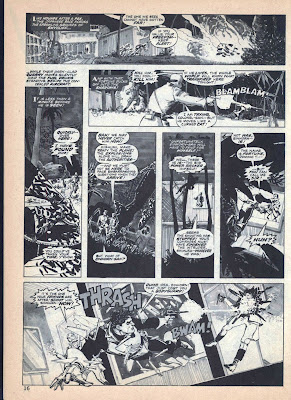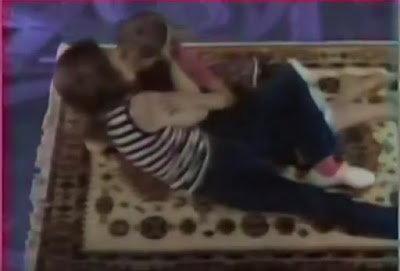Book Review: 'The Lost Traveller' by Steve Wilson
3 / 5 Stars
‘The Lost Traveller’ was first published in the UK in 1976; this Ace Books paperback (308 pp) was released in the US in October 1978,with cover artwork by Robert Adragna. Steve Wilson wrote another biker-centered novel, ‘13’, which was published in the UK in 1985. He also has written a number of nonfiction books about British motorcycles.
‘Traveller’ set in the US, some two hundred years after WWIII erupted in 1993. While large tracts of the country remain uninhabitable wastelands, Southern California is more or less intact, and a civilization of sorts – called the Fief - has grown up around the San Jaquin Valley. The Hell's Angels motorcycle gang, having had the right genetic characteristics to survive the collapse of civilization, have emerged as a potent entity in their own right, and they exist in an uneasy tolerance with the technocrats of the Fief.

Having emerged from the war in reasonably fine style, the Angels would be content to pass their days whoring, riding, partying, singing, and committing various acts of mayhem against their rivals, the Gypsies. However, word has reached Eliot, the Fief elder, that a scientist has discovered a way to make plants grow in contaminated soil – and thus, holds the key to the survival of mankind.
But the scientist, named Sangria, is being kept in isolation in a compound in the Ozarks; a compound belonging to the Easterners, a bloc that is intent on subduing what remains of the US into a fascist New Order.
Eliot comes up with a desperate plan, one that requires the help of the Angels to succeed. A team of Angels are to ride out to the compound, free Sangria, and transport him back to the Fief. This entails a dangerous journey over the so-called ‘Juice Route’, the sole remaining stretch of interstate highway across the southern US.
Long Range John, a softspoken, contemplative Angel, is teamed with the ready-for-anything Milo, and the sadistic, self-centered Belial, for the mission. With the fate of the freedom of California and the Fief resting on their shoulder, the three Angels set out…..but all too soon, they discover that the best-laid of plans can be fatally flawed……
I found ‘The Lost Traveller’ to be a middling read. The idea of Hell's Angels bikers set loose in postapocalyptia certainly is an interesting premise for a sf novel, one with the right measures of ‘Mad Max’ and ‘Fallout 3’.
However, too many chunks of the narrative feature stilted dialogue, and rambling expositions on existential angst and the Meaning of Life. It doesn’t help matters that in his Acknowledgements, author Wilson mentions ‘Black Elk Speaks’, the 1932 book that purported to be a recitation of Sioux Indian wisdom and knowledge; reprintings of the book in 1961 and 1979 triggered a craze for all things Sioux (or ‘Lakota’ as they were renamed).
And indeed, Indian mysticism pervades much of ‘Traveller’, subjecting the reader to overwritten passages in which Long Range undergoes Vision Quests and other spiritual experiences that only come to those blessed with an admiration for the Wisdoms of Native Peoples and the trite, vague aphorisms that accompany such Wisdoms………..
What makes ‘Traveller’ worth reading are the action sequences, which, although confusingly written at times, have a gritty authenticity - and uncertain outcomes - for our heroes. When combined with some well-timed surprise plot twists, the action segments impart sufficient momentum to the narrative to make up for its more meandering segments.
Summing up, ‘The Lost Traveller’ is a mid-70s sf novel that tried to do something novel to the post-apocalyptic narrative; it succeeds sufficiently to be worth picking up if you happen to see it on the shelves of a used bookstore.




















































































